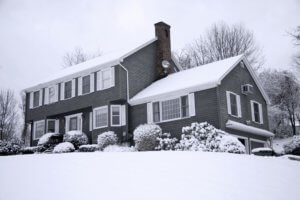
When should you get your roof inspected?
The two most beneficial times in the year to get your roof inspected are after the snow and ice of winter have passed in the spring, and right now, in early fall.
Early fall is ideal for many reasons. First, roofs can take a beating over the summer. High temperatures can weather a roof, and the multiple heat waves we experienced this summer in southeastern Pennsylvania, coupled with above average rainfall and more than one intense hail storm, have made for a challenging season.
Besides assessing the potential damage incurred over summer, it’s also a good idea to take stock of your roof’s ability to withstand the cold, snow, and ice of the upcoming winter.
Finally, it’s a great idea to get your roof inspected in early fall when roofers are generally less busy than in their high season of late fall and winter. If you wait too long to get your roof inspected, you may end up on a waiting list as roofers are booked to capacity.
What should I look for in a pre-winter roof inspection?
Your professional roofer will come with a checklist of things to look for in your pre-winter inspection, but it’s a good idea to know what they’re looking for so you can have a conversation about the condition of your roof and any repairs needed to get you up to snuff before the weather changes.
You can use the following points to guide your conversation with a trusted roofing professional:
- Damaged shingles: Are there shingles that are torn, buckling, cracked, or even missing?
- Loose or damaged gutters: Are the gutters structurally sound, with no cracks or leaks? Are they free from any blockage? Are gutters and downspouts securely attached to the house?
- Compromised caulking: Is any caulking in the roof looking overly worn or cracked?
- Pools of water: Is there an area on your roof where water has pooled? When water collects in one spot it can cause significant damage over time. If a missing shingle or some other issue with the integrity of the roof has created a space where rain water can pool, the health of your roof can be seriously compromised.
- Water stains or mold on the ceiling. Don’t forget to check the inside of your house for evidence of a leaky roof. Telltale water stains or mold are a sure sign that your roof’s protective barrier has been breached, and repairs are in order.
Take advantage of the perfect timing of early fall to talk with your professional roofer today about a pre-winter inspection!
